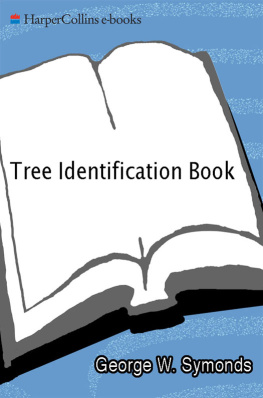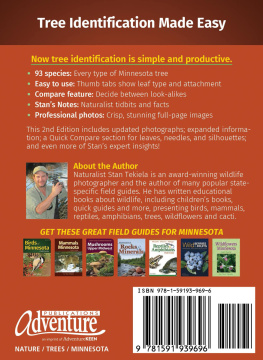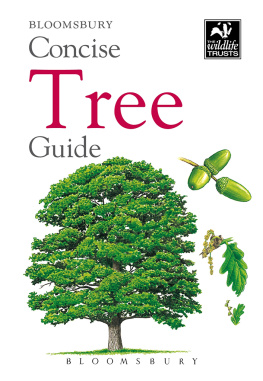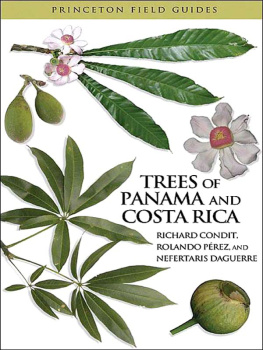
To:M. P. S. Stephen V. Chelminski, who did all the photography for this book, was more than a fine photographer. Every item photographed was carefully discussed between us with its ultimate use in mind. He was always interested in the book and constantly on the lookout for trees, locating a number of hard-to-find specimens.
I particularly want to thank Mr. E. J. Alexander of the New York Botanical Garden for his generous assistance and encouragement. I also want to express my thanks to Mr. P. P.
Politi, head gardener of the New York Botanical Garden, whose extensive knowledge of the plants and their location in the garden was invaluable in collecting specimens used in the book. His assistant, Miss Bride McSweeney, was extremely helpful in looking up locations of specific trees in their files. I also would like to acknowledge the kind assistance of the following: Mr. George Kalmbacher, plant identification specialist, of the Brooklyn Botanic Garden Dr. Jerry S. Olson, forest ecologist, at the Connecticut Agricultural Experiment Station, New Haven, Connecticut Dr.
Donald Wyman, Horticulturist, Arnold Arboretum, Jamaica Plain, Boston, Massachusetts Dr. Francis de Vos, United States National Arboretum, Washington, D. C. Dr. H. R.
Totten, University of North Carolina, Chapel Hill, North Carolina Dr. Hugo L. Blomquist, Professor Emeritus of Botany, Durham, North Carolina The use of material from the following is gratefully acknowledged: The New York Botanical Garden, Bronx, New York The Brooklyn Botanic Garden, Brooklyn, New York The Arnold Arboretum, Jamaica Plain, Boston, Massachusetts The United States National Arboretum, Washington, D. C.
CONTENTS
The aim of this book is to present, visually, details of trees essential for practical identification, which in turn leads to tree recognition. The distinction between tree identification and tree recognition should be clearly understood at the outset.
Identification is based on observation of details. Recognition means knowing trees at a glance, just as one recognizes one's friends. Birds conform to a patterntwo legs, two wings, definite markingsbut not so trees. There are certain advantages in tree identification, however, which the bird watcher doesnt have. A tree does not become alarmed and fly away. A tree has parts which can be touched at will, and all the details pictured in the Keys of this book, with the exception of the bark, can easily be collected and carried away.
It is not necessary to take the book into the field to identify most trees, and if a second look is necessary, the tree can usually be revisited, with or without the book. The botanist is required to know methods of precise identification based on minute observation, often requiring the use of a magnifying glass or microscope. But practical identification is based on details clearly seen by the eye. An important fact to appreciate is that precise identification is not always possible and sometimes is a matter of opinion based on weighing the relative importance of conflicting facts. For example, a Black Oak can be described as having ten or more specific features which, together, identify a tree as a Black Oak. However, in practice, one seldom finds an Oak that has all these features.
It is more likely that a particular tree will have only some of them, while other details will be those characteristic of another Oak. It is thus apparent that only by deciding which features seem most important can the tree be placed in a somewhat dubious category. This responsibility rests with the botanist, and there are often honest differences of opinion on these matters. This curious situation should not deter the amateuron the contrary, it simplifies his problem. Precise identification is not only debatable but totally unnecessary for a full enjoyment of trees. Identification sufficient for practical purposes is possible for almost all kinds of trees by following the methods set forth in this book.
Further, it will be found that observing trees, identified in this way, through the seasons and under varying conditions leads to immediate recognition, which is all that many lumbermen, foresters or nurserymen find necessary. For those who are stimulated to pursue the subject further, an appendix is included which gives an introduction to the more detailed study of botanical methods and the use of botanical manuals. Identification actually means dividing the plant kingdom into botanical groups, starting with large, generally related groups, and subdividing into smaller, more closely related ones. Genus (plural genera) is the division represented by the main name of a tree, such as the genus Oak, genus Maple, etc. Species qualifies the genus, as in the various species of the genus Maple: Sugar Maple, Silver Maple or Red Maple. The botanist places the genus name first with a capital letterAcer (Maple), followed by a specific epithet in small lettersrubrum (red), the two together forming the species nameAcer rubrum (Red Maple).
Varieties subdivide the species still further, the variety name consisting of the species name followed by a qualifying word, as in Acer rubrum columnare (Columnar Red Maple). The scientific names are useful because they are understood in all countries, whereas several popular names may be applied to the same tree. For example, the scientific name for a certain tree is Nyssa sylvatica, but it is called locally a Black Gum, Sour Gum, Tupelo, Black Tupelo, Pepperidge or even Beetle Bung Tree. The various genera are fairly distinct and less subject to differences of opinion. The species, also, are usually clear-cut, but it is at this point that the above-mentioned difficulties begin to appear. When one gets into varieties, real problems arise, and therefore it is suggested that until further acquaintance tempts one into these difficult waters, the beginner would do well to stop at identifying genera and many of the species.
Thus the main principle of identification is elimination: vast numbers reduced to workable groups, and selection, resulting in identification, coming within these small groups. The small group is the genus; the final selection, in this case, the species. Once the genus is known, trees not included heresuch as local types, trees outside the region covered, and even foreign treescan be identified by consulting a good book or manual for any particular area. The primary difficulty ordinarily encountered will no longer exist, and instead of an aimless search among endless possibilities, an intelligent, directed approach is substituted. The trees described in this book grow in a region roughly bounded by Maine (extending into Canada), west to North Dakota and south into Texas and along the Gulf of Mexico to northern Florida. Of course, not every tree is found in all parts of this area, and, as this book is not a complete tree manual, certain trees were of necessity omitted.
Such omissions include: (1) Strictly southern or subtropical trees, or those of another region which overlaps small sections of the area covered. (2) Some trees of genera whose species are very numerous. It has been felt in these cases that a number of the most important and representative species would be sufficient and would enable anyone interested in further species identification to do so in a botanical manual. The Oaks are an example of this, for with over fifty species in this region alone, it is obviously impractical to include them all. (3) Hybrids, varieties and foreign trees. However, a number of foreign trees which have become naturalized in this country are included.
The trees in this country have been restricted, from time to time, to certain areas by a combination of temperature, moisture, soil conditions and other factors, some of which are unknown or only partially understood. Some of these restrictions were imposed in the distant past, and trees that thousands of years ago grew over a wide area are now found only in a few places. The Sequoias and Redwoods are examples of this. The expressions natural range and native trees, therefore, are meaningful concepts only if applied to areas occupied by certain trees at a specific geologic date. With the white man came not only foreign trees but the desire to transplant, thereby introducing new factors into the natural-selection process of trees in this country. A number of foreign trees planted here have escaped and have become naturalized over wide areas.
Next page










